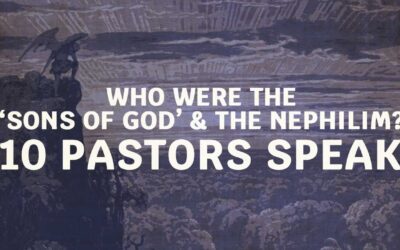The story of the nephilim has captured the imaginations of people for centuries. Described as ‘giants’ or ‘men of renown’ in the Book of Genesis, the nephilim have been the subject of much debate and interpretation throughout history. In this article, we will explore the meaning and significance of the giants or nephilim and their place in biblical and historical contexts.
We will delve into the origins and definitions of the nephilim and try to better understand what they meant in their original context.
Origins and Definitions of Nephilim
The word “nephilim” is first mentioned in the Book of Genesis in the Old Testament. In Genesis 6:4, it is written, “The Nephilim were on the earth in those days, and also afterward, when the sons of God came in to the daughters of men, and they bore children to them. Those were the mighty men who were of old, men of renown.” This verse is the first reference to the nephilim in the Bible, and it is also the source of much of the debate and interpretation surrounding the meaning of the term.
Other references to the nephilim can be found in other parts of the Bible, such as Numbers 13:33, where it is written that “There we saw the Nephilim (the sons of Anak, who come from the Nephilim); and we seemed to ourselves like grasshoppers, and so we seemed to them.” These references to the nephilim suggest that they were seen as powerful and imposing figures in biblical times.
The exact meaning of the term “nephilim” is a topic of debate with two main lines of thought.
- The term “nephilim” is derived from the Hebrew verb “naphal,” which means “to fall.”
- The word “nephilim is derived from the Hebrew and similar Aramaic word “naphila” or “naphiyl”, which mean ‘giant’ or ‘orion’ respectively.
Tim Chaffey in his book Fallen: The Sons of God and the Nephilim is one of the few that argues in great detail that the second interpretation is the correct one, and more accurately aligns with the earliest interpretations of the passage.
Because these two possible origins are distinctly different, very different interpretations have emerged as a result.
Nephilim in Ancient Mythologies?
The legend of the nephilim is not unique to the Bible. Similar stories of giants and supernatural beings can be found in many ancient mythologies around the world. For example, in the Epic of Gilgamesh, a Sumerian myth, the hero Gilgamesh, who is part god and part man, battles against the giant Humbaba.
Similarly, in Greek mythology, there were the Titans, a group of powerful and imposing figures who challenged the gods in a similar way that the Nephilim do in 2nd Century Jewish literature like the Book of Enoch and the Book of Giants.
While there are similarities between the nephilim and other mythical giants, there are also differences.
Jewish and Christian Interpretations of word “Nephilim”
Throughout history, the story of the nephilim has been interpreted in different ways by Jewish and Christian scholars and historians. In the 2nd century BCE, Jewish writers before Christ wrote about the nephilim, providing some of the earliest interpretations of the term as giants who resulted from the marriages between disobedient angels and human females.
Early Jewish philosophers, historians, and rabbis also had their own interpretations of the nephilim, with some suggesting that they were a symbol for the corruption and moral decay of humanity. In Christianity, early church fathers Irenaeus, Justin Martyr and even apostles like Peter took the story very literally and viewed it as an aspect of the origin of evil in the world.
Today, modern Christian scholars and commentators continue to debate the identify of the Nephilim in Genesis 6.
Conclusion
In conclusion, the story of the giant nephilim is a complex and multifaceted one that has been debated and interpreted by scholars and religious leaders for centuries. While the origins of the term are unclear, the story of the nephilim has had a profound impact on both Jewish and Christian traditions, and has contributed to a larger conversation about the nature of evil and the struggle between good and evil in the world.
Through the lens of ancient mythologies, the nephilim can be seen as both unique and yet similar to other stories of mythical giants around the world.



